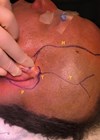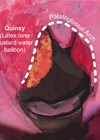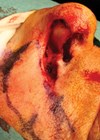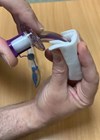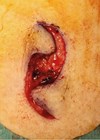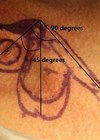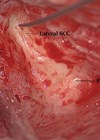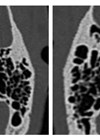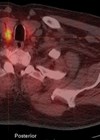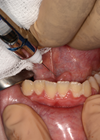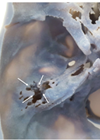How I Do It
Fibre-delivered transoral laser surgery – description of a novel technique
Transoral flexible laser surgery refers to the use of a fibre-delivered laser for laryngeal procedures via direct laryngoscopy. We hear of a novel innovation. The continuous development of instruments to perform endoscopic procedures for treatment of laryngotracheal pathology – among...
Temporoparietal fascia flap for blind sac closure
Chronic ear disease can be challenging to manage and difficult for patients to live with. In this article, the authors describe their technique for otomastoid obliteration and blind sac closure of the external canal allowing for a more tolerable situation...
Building low-cost high-fidelity simulation for ENT
In this article, the authors describe their ingenious technique to produce affordable yet realistic simulation models for some common ENT procedures. The use of surgical simulation in otolaryngology training has significantly increased in recent years. This is most likely due...
Random-pattern skin flaps: part 4 - transposition flaps
In the final part of our series on local skin flaps (see Part 1, Part 2 and Part 3) in ENT, the authors describe the usefulness of the transposition-type flap and highlight some examples. Rotational advancement flap Useful for defects...
The ‘umbrella furling’ deflation technique for cuffed tracheostomy tube - a useful tip for an easier tracheostomy insertion
In this article, the authors describe a quick and effective technique to assist with the maximal deflation of a tracheostomy tube cuff prior to insertion, thus making the process easier with less chance of damage to the cuff and a...
Random-pattern skin flaps: part 3 - Z-plasty flaps
In this third (see Part 1 here, Part 2 here and Part 4 here) of four articles outlining, in some detail, the practical steps for some important local skin flaps, Christopher Thompson and Miles Bannister describe the Z-plasty; a very...
Random-pattern skin flaps: part 2 - rhomboid and bilobed flaps
In the second of our series on local skin flaps (see Part 1 here, Part 3 here and Part 4 here), the authors describe more techniques and examples of various skin flaps that trainees should find very interesting. Rhomboid flap...
Triple semicircular canal occlusion and Meniere’s disease: a rising alternative treatment?
Patients with dizziness form a large part of the workload for ENT surgeons. In the overwhelming majority of cases, management will be medical and successful. However, occasionally some patients present a challenge when they have not responded to conventional treatments....
SCOTLAND preoperative tympanomastoid CT temporal bone mnemonic system
Learning how to interpret a CT scan of the temporal bones can be a daunting task, especially for a head and neck surgeon like me! However, to make life easier, the authors have devised a useful system to help cover...
Targeted focal parathyroidectomy
Leanne Hamilton and Louise Clark describe their technique for helping to localise parathyoid adenomas. Surgically this can be difficult, so careful preoperative evaluation using imaging as described can help minimise difficulties intraoperatively when identifying the parathyroid adenoma. Preoperative imaging has...
Salivary duct clipping for drooling
Drooling can be a challenging problem to manage in paediatric ENT. The variety of medical and surgical treatments suggests that there is no gold standard treatment. Nicola Stobbs and Ravi Thevasagayam describe an approach to ligating the salivary ducts. Drooling...
Superior semicircular canal dehiscence: transmastoid obliteration
Sometimes patients with dizziness turn out to have slightly more unusual causes of their problem. Thomas Milner and Georgios Kontorinis describe their technique for managing patients who have a diagnosis of superior canal dehiscence as an identified cause of their...



